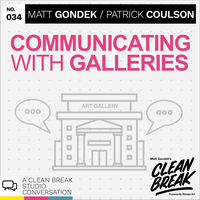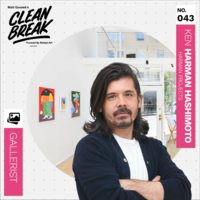Communicating
with Galleries
- by Always Art Staff


As you look to gain visibility within the art world, enhance your reputation, and connect with collectors, it will be important that you develop strong relationships with galleries. To do so, you will need to improve your networking skills and communication to set the foundation for positive, professional interactions. Galleries play an important part in building your career and getting your artwork exhibited, so be sure to follow these best practices in your communication.
Research the gallery
There are a lot of artists competing for gallery attention. Before contacting a gallery, make sure you do your research to see if it’s a good fit for your artwork and career goals. Some galleries specialize in artists at various stages in their careers, specific mediums, styles, or artistic movements. Don’t reach out to a gallery that is irrelevant to your practice. Doing so will make you seem unprofessional and ignorant of the art world. To get a sense of the work they represent, explore the gallery’s website and social media to get a feel for whether your work fits their style and criteria.
Be professional
Your relationship with a gallery is a business relationship, so it’s important that you are nice to work with and respectful. Don’t communicate in the same way that you would with a friend or your family. If you don’t hear back, feel free to follow up once, but don’t come across as needy and continue to email them repeatedly. Gallerists are busy and may not respond to every email they receive.
Follow the gallery’s submission guidelines
Check the gallery’s website for guidelines on how to submit work for consideration. Submitting your work in another format may eliminate your application. Don’t email the director if they have an online portal, thinking it will get you more attention. Instead, it will make it seem like you didn’t research. Follow their protocols to make reviewing your work easier for their team.
Be patient
Be respectful that galleries receive numerous submissions and emails, so it will take time to review your work. Be patient and don’t follow up persistently. Let them complete their processes so they can take the time they need to review your work. You also may never hear back from some galleries, and it’s important to accept that that’s part of the process.
Be open to feedback
Some helpful galleries will provide feedback about your work. This can offer you invaluable insights as you look to advance your career in the industry. Take their feedback to heart and consider whether it resonates with your artistic vision. This can help you improve your work and presentation for the future to ensure you eventually do land gallery representation.
Be clear about your terms
If a gallery is interested in representing your work, be sure to have a clear conversation and written agreement about your terms, including pricing, commission, and exhibition details. Have them provide a written agreement or contract and get a lawyer to review the document so you can be confident you agree to and understand everything within it. This will help avoid unwanted tension and conflict in the future.
Maintain a positive relationship
Even if galleries turn you down, it’s essential that you uphold a positive relationship with everyone you interact with in the industry. This will become part of your reputation, and a negative interaction can harm your chance of succeeding. Always thank the gallery for their time, and express that you are open to future opportunities if your work ever aligns with their vision. Leave your relationships on a positive note so that you don’t negatively impact your reputation in the art world.





